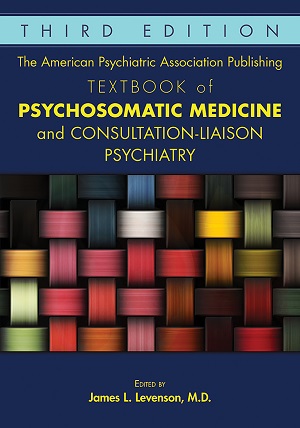Chapter 27.Dermatology
Sections
Excerpt
Dermatological disorders are associated with psychiatric and psychosocial comorbidity, as well as psychosocial stress, in 25%–30% of cases (Gupta and Gupta 1996). The skin is the largest organ of the body and functions as a social, psychological, and metabolically active biological interface between the individual and the environment. The skin and its appendages are innervated with a dense network of afferent sensory nerves and efferent autonomic nerves. The afferent sensory nerves convey sensations of touch, pain, itch, temperature, and other physical stimuli. The efferent innervation of the skin is mainly autonomic and sympathetic and plays a role in maintaining cutaneous homeostasis by regulating vasomotor and pilomotor functions and the activity of the apocrine and eccrine sweat glands. This mainly sympathetic efferent innervation makes the skin much more susceptible to react during situations associated with stress (Gupta and Gupta 2014). Autonomic nervous system (ANS) activation and immune dysregulation can lead to exacerbation of immune-mediated dermatological disorders (e.g., psoriasis, atopic dermatitis) and sympathetically mediated symptoms (e.g., pruritus, idiopathic urticaria, hyperhidrosis). Physical stimulation of the skin (e.g., in recurrent body-focused repetitive behaviors or excessive scratching of the skin) can serve as a further means of regulating affect and coping with intense emotional states. The skin plays a central role in thermoregulation and sleep onset, which can be affected by a lack of proper peripheral dissipation of heat (through sweating, vasodilatation) secondary to a dermatological disorder (Gupta and Gupta 2013d).
Access content
To read the fulltext, please use one of the options below to sign in or purchase access.- Personal login
- Institutional Login
- Sign in via OpenAthens
- Register for access
-
Please login/register if you wish to pair your device and check access availability.
Not a subscriber?
PsychiatryOnline subscription options offer access to the DSM-5 library, books, journals, CME, and patient resources. This all-in-one virtual library provides psychiatrists and mental health professionals with key resources for diagnosis, treatment, research, and professional development.
Need more help? PsychiatryOnline Customer Service may be reached by emailing [email protected] or by calling 800-368-5777 (in the U.S.) or 703-907-7322 (outside the U.S.).



